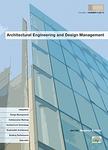版权所有:内蒙古大学图书馆 技术提供:维普资讯• 智图
内蒙古自治区呼和浩特市赛罕区大学西街235号 邮编: 010021

作者机构:Linnaeus Univ Dept Forestry & Wood Technol Vaxjo Sweden Linnaeus Univ Dept Built Environm & Energy Technol Vaxjo Sweden
出 版 物:《ARCHITECTURAL ENGINEERING AND DESIGN MANAGEMENT》 (建筑工程与设计管理)
年 卷 期:2019年第15卷第5期
页 面:382-401页
核心收录:
学科分类:08[工学] 0813[工学-建筑学] 0814[工学-土木工程]
主 题:Decision-making big data optimisation non-dominated sorting genetic algorithm II analytical hierarchy process trade-off design
摘 要:The selection of the most appropriate window and blind design is a challenging task due to the existence of potential conflicts between visual comfort, thermal comfort, energy consumption and life cycle cost. Resolving these conflicts relies on a trade-off window and blind design. This research applied a decision-making framework to select a trade-off window and blind design for an office room in Sweden. The decision-making framework was developed based on integrating the non-dominated sorting genetic algorithm-II and the analytical hierarchy process. The first step in the application of the framework was to generate a model of the office room using EnergyPlus. Six types of window and four types of blind;an internal venetian blind, an internal roller curtain, an external venetian blind and an external overhang panel, were modelled in EnergyPlus. The second step was to run an optimisation using non-dominated sorting genetic algorithm-II. For this purpose, various window and blind design variables were specified in modeFRONTIER platform. The third and last step in the application of the decision-making framework was to select a trade-off window and blind design using analytical hierarchy process. The results show the strength of the decision-making framework in selecting a trade-off design, and thereby the ability to resolve conflicts through intelligent use of simulation in analyzing big-data in built environment, energy and cost sectors. Since, the computation and processing power for performing simulations is constantly increasing, architects and designers can exploit the decision-making framework and locate a trade-off design in a relatively short period of time.